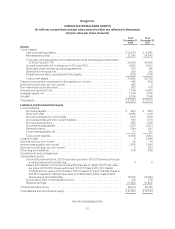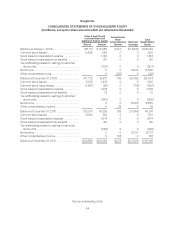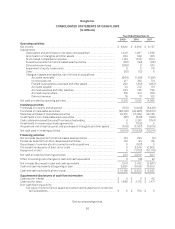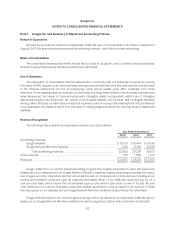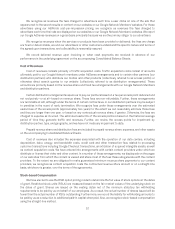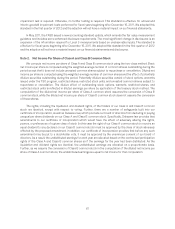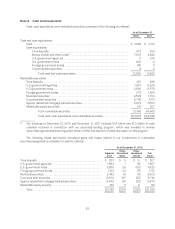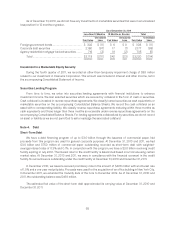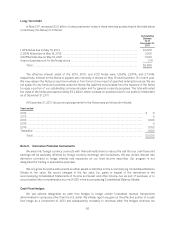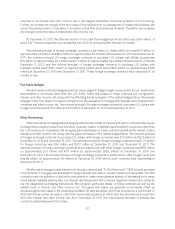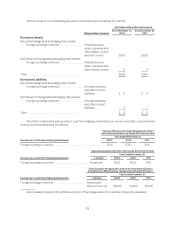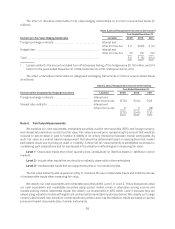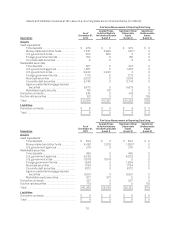Google 2011 Annual Report Download - page 90
Download and view the complete annual report
Please find page 90 of the 2011 Google annual report below. You can navigate through the pages in the report by either clicking on the pages listed below, or by using the keyword search tool below to find specific information within the annual report.impairment test is required. Otherwise, no further testing is required. This standard is effective for annual and
interim goodwill impairment tests performed for fiscal years beginning after December 15, 2011. We adopted this
standard in the first quarter of 2012 and the adoption will not have a material impact on our financial statements.
In May 2011, the FASB issued a new accounting standard update, which amends the fair value measurement
guidance and includes some enhanced disclosure requirements. The most significant change in disclosures is an
expansion of the information required for Level 3 measurements based on unobservable inputs. The standard is
effective for fiscal years beginning after December 15, 2011. We adopted this standard in the first quarter of 2012
and the adoption will not have a material impact on our financial statements and disclosures.
Note 2. Net Income Per Share of Class A and Class B Common Stock
We compute net income per share of Class A and Class B common stock using the two-class method. Basic
net income per share is computed using the weighted-average number of common shares outstanding during the
period except that it does not include unvested common shares subject to repurchase or cancellation. Diluted net
income per share is computed using the weighted-average number of common shares and the effect of potentially
dilutive securities outstanding during the period. Potentially dilutive securities consist of stock options, warrants
issued under the TSO program, restricted shares, restricted stock units, and unvested common shares subject to
repurchase or cancellation. The dilutive effect of outstanding stock options, warrants, restricted shares, and
restricted stock units is reflected in diluted earnings per share by application of the treasury stock method. The
computation of the diluted net income per share of Class A common stock assumes the conversion of Class B
common stock, while the diluted net income per share of Class B common stock does not assume the conversion
of those shares.
The rights, including the liquidation and dividend rights, of the holders of our Class A and Class B common
stock are identical, except with respect to voting. Further, there are a number of safeguards built into our
certificate of incorporation, as well as Delaware law, which preclude our board of directors from declaring or paying
unequal per share dividends on our Class A and Class B common stock. Specifically, Delaware law provides that
amendments to our certificate of incorporation which would have the effect of adversely altering the rights,
powers, or preferences of a given class of stock (in this case the right of our Class A common stock to receive an
equal dividend to any declared on our Class B common stock) must be approved by the class of stock adversely
affected by the proposed amendment. In addition, our certificate of incorporation provides that before any such
amendment may be put to a stockholder vote, it must be approved by the unanimous consent of our board of
directors. As a result, the undistributed earnings for each year are allocated based on the contractual participation
rights of the Class A and Class B common shares as if the earnings for the year had been distributed. As the
liquidation and dividend rights are identical, the undistributed earnings are allocated on a proportionate basis.
Further, as we assume the conversion of Class B common stock in the computation of the diluted net income per
share of Class A common stock, the undistributed earnings are equal to net income for that computation.
61


